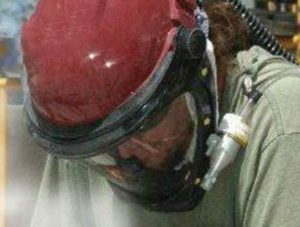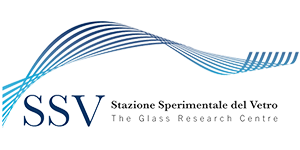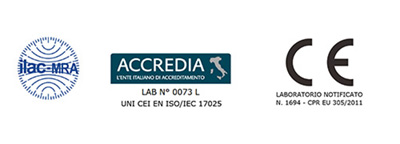 SSV has many years of experience in the field of monitoring of physical and chemical pollutants in the glass industry workplaces (hazardous chemicals, thermal microclimate, fine dust, inorganic fibers, asbestos).
SSV has many years of experience in the field of monitoring of physical and chemical pollutants in the glass industry workplaces (hazardous chemicals, thermal microclimate, fine dust, inorganic fibers, asbestos).
Sampling is carried out in situ with suitable instruments, both to be installed on fixed stations and by means of portable samplers, which can be worn by individual operators following procedures and times depending on the specific parameter analysed.
The collected samples are then analysed in laboratory according to the regulatory requirements, and the analytical results are processed to calculate the average daily exposure, in comparison with the relative threshold limits imposed by laws or regulations in force.
The assessment of exposure to chemical agents is carried out according to the procedures laid down in the European standard UNI EN 689, with both stationary (fixed location) and personal sampling. Depending on the specific production units and work tasks monitored, the main substances of interest for the analytical characterizations are: respirable or inhalable dust, free crystalline silica, oil mist, polycyclic aromatic hydrocarbons, HCl, HF, graphite, tin, welding fumes (Ni, Cr, Mn), solvents and other organic substances, inorganic fibers (including asbestos). For each chemical agent, the adopted sampling and analysis methods are a function of the specific reference standard in place.
The term “Thermal microclimate” stands for the set of main parameters that characterize a given environment from a thermal point of view: 1) air temperature, 2) average radiant temperature, 3) air speed, 4) relative humidity.
The assessment of the risk related to the thermal microclimate present in the workplace is necessary to verify whether the hot environment can compromise the safety or health status of workers. It is carried out in Italy in accordance with Articles. 17 and 28 of Legislative Decree no. 81 of April 09, 2008 and subsequent amendments and additions, and is developed on the basis of measurements of the 4 environmental parameters listed above and of the estimate of the personal parameters of the worker, i.e. metabolic activity and thermal insulation of clothing, derived from special reference tables (see UNI EN ISO 8996 and UNI EN ISO 9920).
Exposure to refractory ceramic fibres and inorganic fibres in general is assessed in accordance with the European standard UNI EN 689 by means of both stationary and personal sampling, which can be carried out both during normal operations and during extraordinary operations potentially risky or problematic from the point of view of workers’ exposure, such as cleaning and maintenance, or construction/demolition of refractory masonry works.
SSV is recognized as a reference laboratory at European level for the competence acquired in the design and execution of investigations to verify the concentration of free crystalline respirable silica in the glass industry.
For the sampling operations of the respirable fraction of airborne dust, it is possible to use different types of separators; the sample is collected during a “typical” work shift for each type of potentially “critical” activity, and, after appropriate preparation, is analysed in laboratory to quantify the presence of crystalline silica, detected by X-Ray diffraction.

